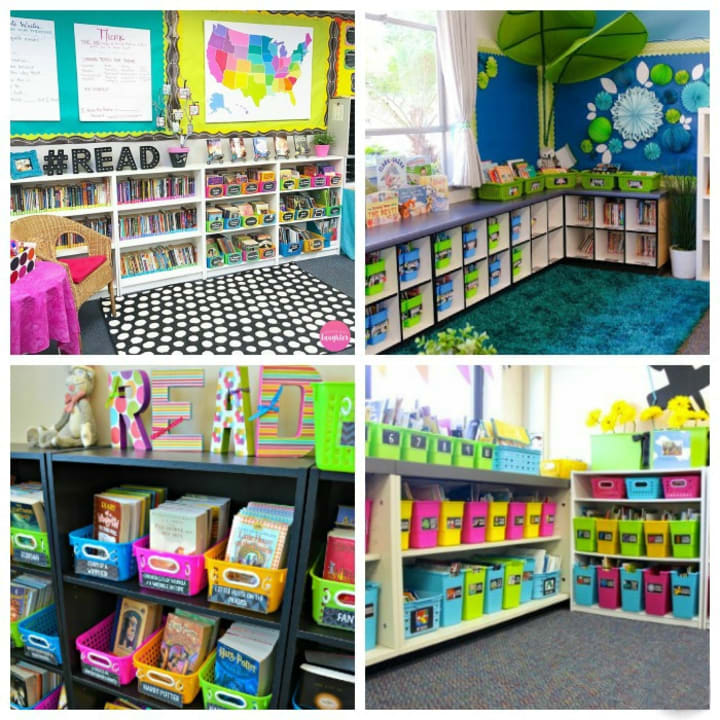3 Tips for Creating a Purposeful Classroom Library
Increasing the Excitement for Reading

Classroom libraries are becoming more popular in schools across the nation. No longer do students have to go to a school library to get books of their choice. Instead, students can conveniently grab a book right from their classroom library. With the horror of skimming through the shelves of a large library, and going through the lengthy checkout process, Students are able to choose books from a wide range of genres and topics.
Teachers who incorporate the use of classroom libraries in their instruction are more effective at teaching reading strategies. Teachers can help students build better reading habits both in the classroom and at home. When students spend more time reading, their reading fluency increases. A study by Anderson & Nagy (1992) estimated that children learn an average of 4,000 to 12,000 new vocabulary words each year as a result of book reading.
To encourage student reading, teachers should make classroom libraries fun and inviting. Here are some tips for setting up an engaging classroom library
1. The classroom library should be visually appealing and inviting to students.
Studies have shown that students are more likely to use libraries that are attractive and appeal to their interests. The library should be in a nice, quiet area in the classroom set aside from the main instructional area. Teachers can make the library more productive reading area by adding bean bags, small chairs, carpet, and stools for students to sit and read. These items should only be used for the reading area. Besides books, teachers can incorporate other reading tools such as magnifying glasses, bookmarks, and reading logs. Although the library is away from the student area, it should be open and monitored by the teacher at all times. This will keep students coming back to read more.

2. The library should be well organized and purposeful.
There isn't anything worse than an unorganized and messy library. the books in the library should be organized and sorted by genre, language, topic, and reading/Lexile level. Teachers can readily access free leveling services from websites such as Booksource, Level It Books, and Book Wizard to level the books in their classroom. The library should be leveled (A-Z) and contain books with various levels of reading difficulty. Students should be encouraged to start books at their particular reading level and work their way up. The teacher should encourage their students to keep the library organized by returning the books to their original spot. The classroom library should be kept neat and clean at all times. This will alleviate chaos when searching for books or moving around the library in general. To make it easier for students, teachers can label and assign a particular number of books at one time. This will to cut down on student movement throughout the reading time.

3. There should be Guidelines and procedures for accessing the classroom library.
All of the students cannot access the classroom library at once. For this very reason, the teacher should designate certain times for library use throughout the school day. Teachers usually provide library access to students during the reading block, however, it can be sued for various purposes. The teacher can save time by creating routines and procedures for accessing the library and start off by teaching these routines to the class first. To alleviate any confusion, the teacher can create a daily schedule where certain groups access the library while other groups are doing something else. This will provide the perfect opportunity for the Teacher to monitor student movement. The library gives time and space for students to work on their reading skills. Whether students are reading independently or with a partner, students should spend no more than 20 minutes in the library. This gives ample time for more students to access the library in a rotating-like manner. The teacher can create a poster or chart that lists the rules for using the library. Second, the teacher can spend time going over the rules with the whole class before releasing students. These routines may seem over the top at times, but it will save you from the frustration later on. With these sound routines in place, students will be begin to take ownership of the library. The teacher can also select a student to be the classroom librarian. This awesome responsibility can be given to a student whom the teacher feels in very organized and enjoys lending a helping hand from time to time.
There are a ton of resources to aid in the development of a purposeful classroom library. Teachers can download many of these sources right from the web. If you are unsure about creating a classroom library, feel free to ask your School Principal or Instructional leader to help you. You'll be surprised at all of the benefits you could reap just by incorporating a library in your classroom.
These are just a few tips for getting students excited about reading. For more information about classroom libraries, please visit teacher.scholastic.com.







Comments (1)
Great tips!